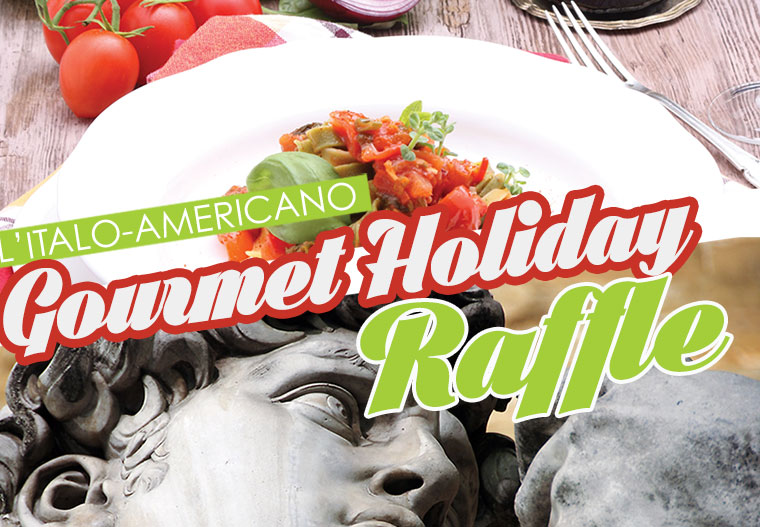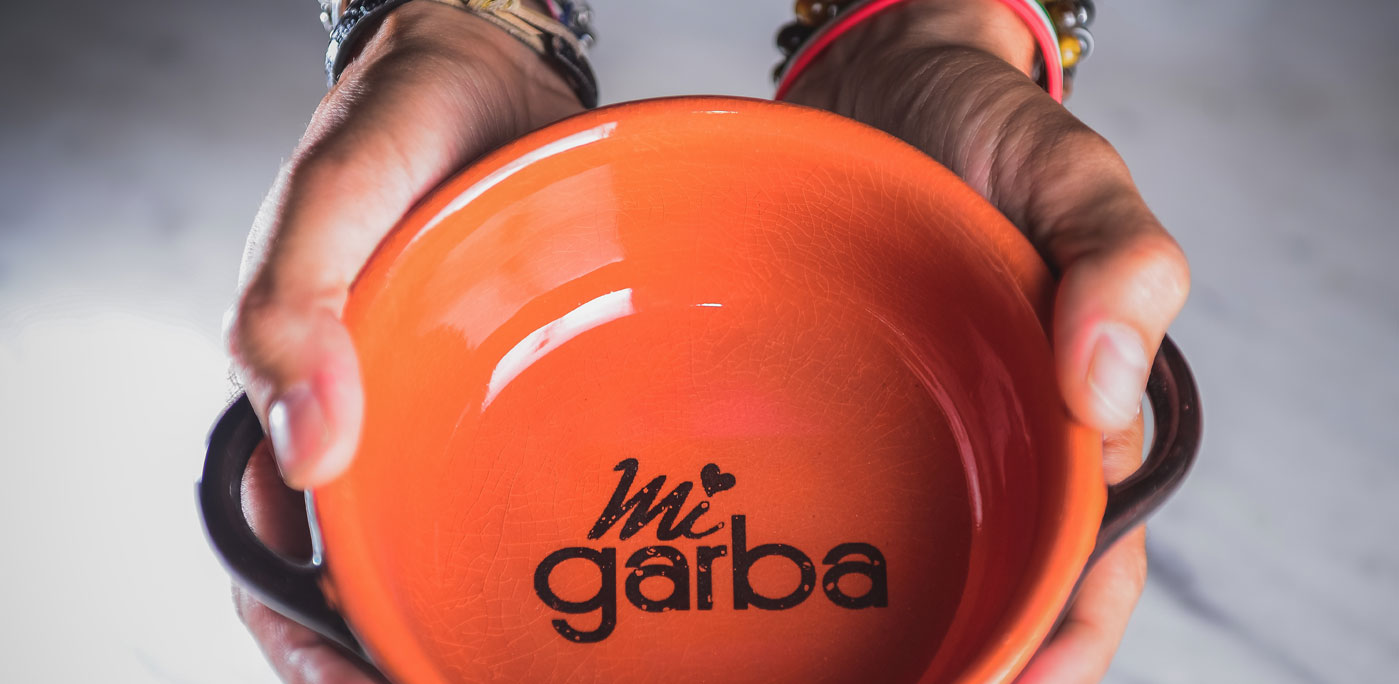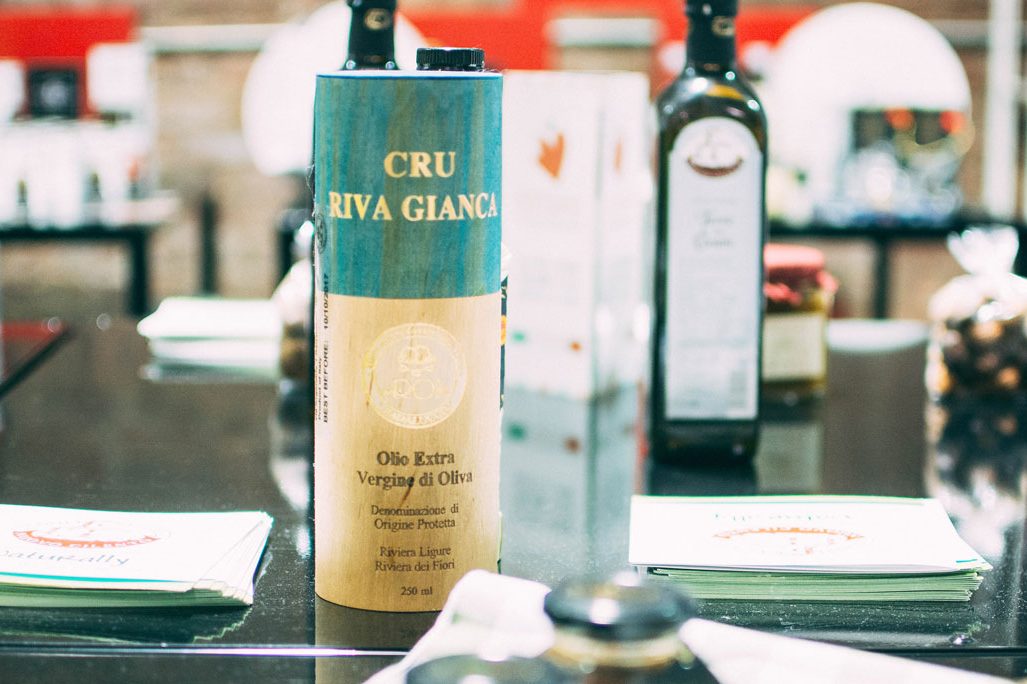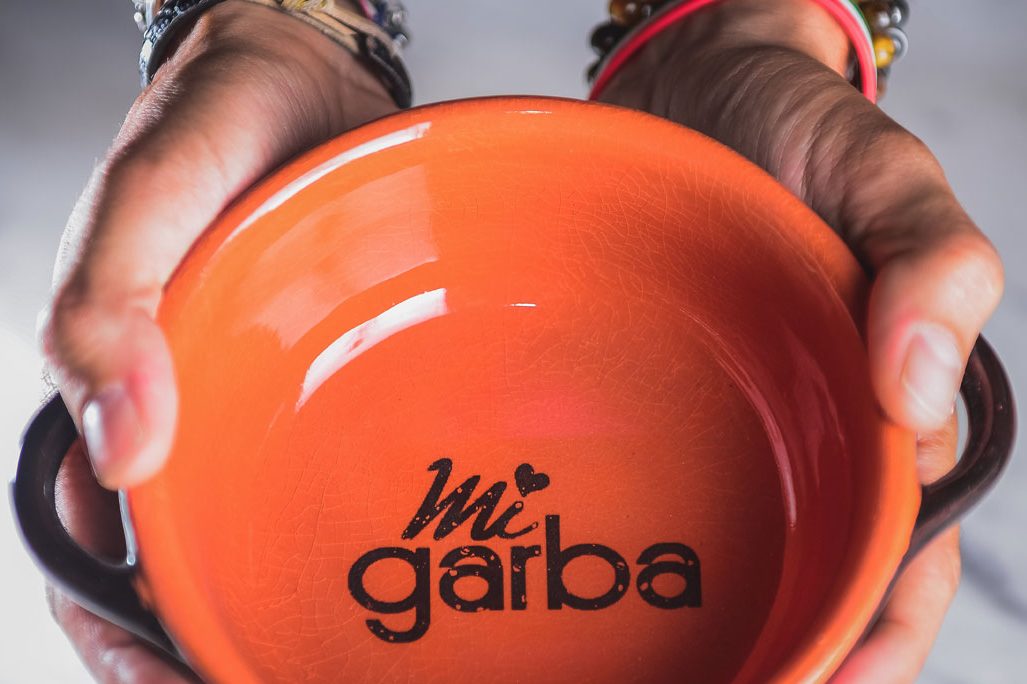Step into Mi Garba, just south of Union Square, and you will feel as though you have left New York City far behind. You are in Tuscany now, but you might not know it from looking around this Tuscan wine bar.
You won’t find any of the standard Italian restaurant tropes here. Instead, the space is sleek and modern. A long, high communal table takes up the center of the room, with more intimate seating against the wall. Angled studio light fixtures hang from the high ceilings. A chalkboard wall lists specials over a marble bar, and a rain barrel holds umbrellas.
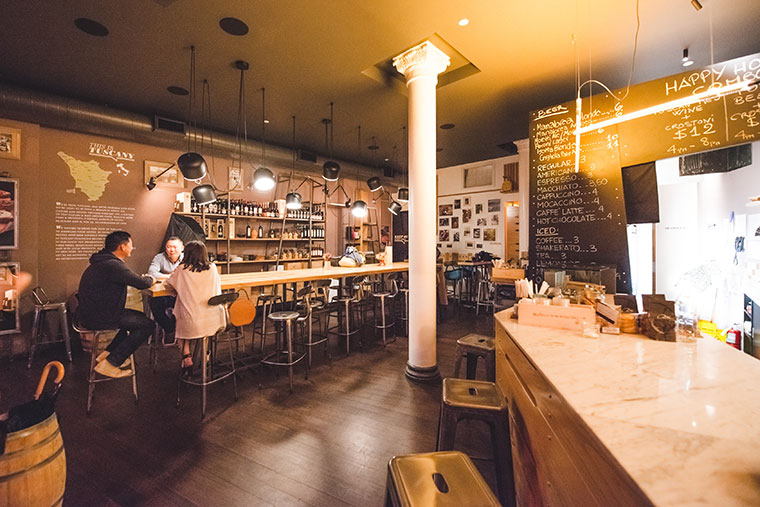
If you listen closely, though, you’re likely to hear a few phrases in Italian from the bar’s customers or its manager, Giuseppe. You may notice the photographs of lesser-known Florentine views hung from the walls, or the spare built-in shelving unit piled with books, bottles of wine, and bags of cantucci, a traditional Tuscan cookie. If you are especially observant, you might realize that most of the furnishings are by Italian designers.
And once you sit down, ordering a glass of Ridolfi Brunello di Montalcino 2010, or a 2012 Chianti Classico by Il Mandorlo Azienda Agricola, perhaps accompanied by Mi Garba’s signature crostini (class Tuscan-style toasted bread topped with spreads made of vegetables, cheese and more), you’ll feel it – Tuscany is in the atmosphere.
Tuscan food has never enjoyed the heights of popularity in the United States known by Neapolitan, Sicilian, or even Milanese culinary staples. The region’s traditional cuisine, known as cucina povera, or peasant cooking, is often overlooked by those who didn’t grow up with it. Tuscan bread is hard and saltless; some of its signature dishes, like ribollita (a make-use-of-leftovers soup of boiled tomatoes and bread) or zuppa di fagioli (stewed bean soup) can be seen as too humble to impress.
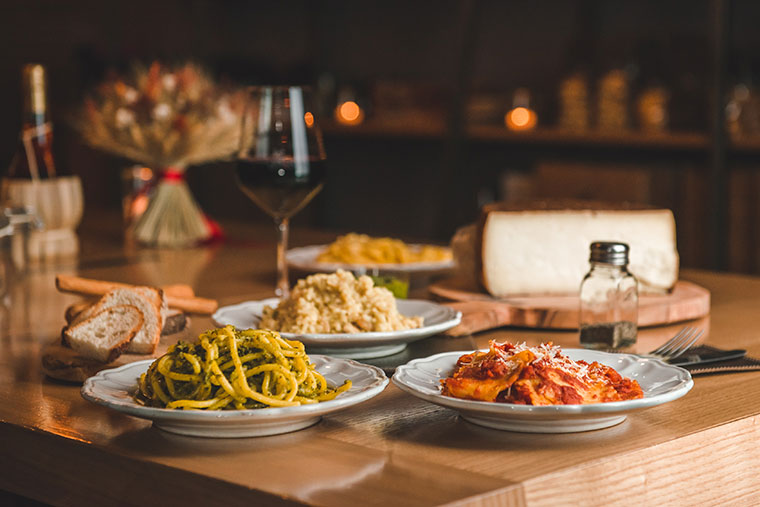
In fact, these dishes invoke the essential appeal of Tuscan food: it is simple and honest cooking, with pure flavors that compel focused appreciation. Mi Garba understands this. It doesn’t only serve authentic Tuscan food; it conveys the heart of the Italian philosophy of life: Live simply and eat well.
I met up with Mi Garba’s founder and owner, Andrea Tempestini, on a recent Wednesday evening at the wine bar. I wanted to learn more about how this unique spot came to be, his journey in opening it, and the challenges he faced as an Italian business owner in New York. Tall, with youthful features and a contagious energy, Andrea is good-humored, quick to laugh and very passionate about Italian food.
Andrea was born in Prato, a small city just outside of Florence. After graduating from the University of Florence, he ultimately joined his family business, Gastronomia Toscana, a company that produces Tuscan food specialties and sells them to grocery stores and restaurants throughout Italy. A few years ago, the company decided to expand internationally.
Ambitiously, they chose to start in New York. “The entire world wants to come to New York,” Andrea said. “This city is like a window on the future.”
More importantly, New Yorkers “get it” – and “it” is authentic Tuscany, its people, its lifestyle, its terroir. “Our goal for the restaurant was not to please everyone,” Andrea said. “Our goal was to appeal to a specific type of person: someone who knows and loves Tuscan cuisine and culture.”
With that goal in mind, the food is unquestionably authentic. Even the fruits and vegetables are imported directly from Italy. None of the recipes have been changed in any way to accommodate the American palate. “What you eat here is the same as what you would eat in Italy,” Andrea said. “Those that known Tuscany appreciate the food and its flavors; even those who haven’t been there but have heard about it, enjoy it.”
It wasn’t a simple path to success, though. “This was the most challenging thing I’ve ever done,” Andrea said. “Think about it: different country, different laws, different culture, different consumers. The only certain thing was the desire to do it, the determination, and the knowledge that our products are high quality.”
Yet Andrea was able to open the restaurant just a year after starting to plan – “and without speaking the language,” he added cheekily when I express my amazement at that pace in a city where restaurant openings tend to take upwards of 18 months or even two years. “Time is money,” he said.
Andrea is clearly a man on a mission – and not just when it comes to bringing authentic Tuscan food to New York. With the help of a sommelier friend in Florence, Andrea has also crafted a list of Italian wines unavailable anywhere else in the United States. Originally, every wine on the list hailed from Tuscany, but he has added in some other regional selections to offer his customers more variety. Andrea opts to serve wines from vintners that are too small to obtain commercial distribution in the U.S. But if a wine store or restaurant does begin carrying one of his wines, he’ll drop it and pick up another undiscovered bottle to replace it.
Mi Garba means “Mi piace” (I like it) in Florentine dialect. It’s just another way that the restaurant feels like home to those of us who know and love Tuscany.
